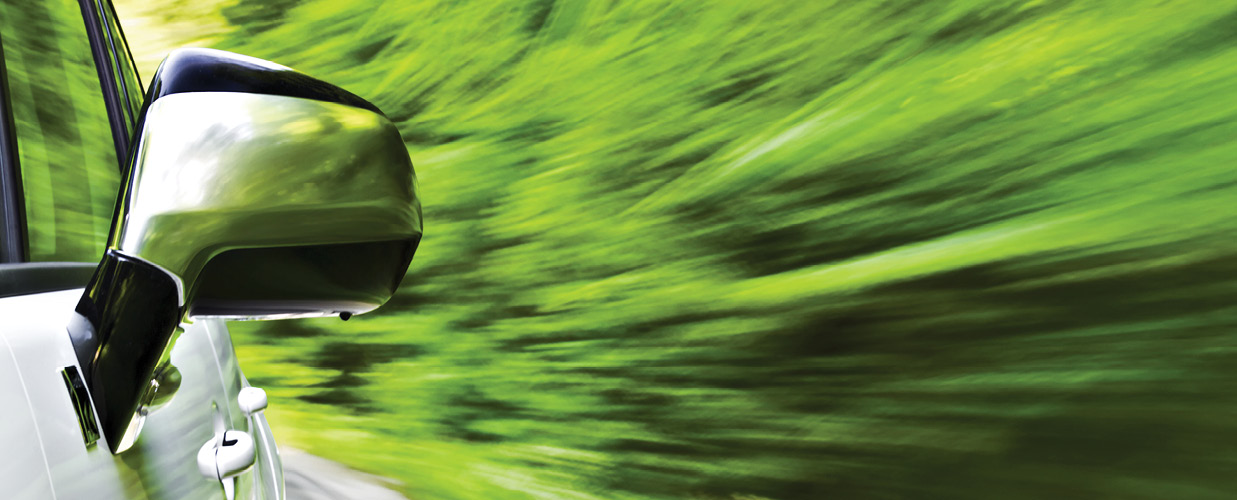 Remember George Jetson’s flying car that folded up into a briefcase? Automotive technology isn’t there quite yet, but many features that were sci-fi a decade ago are becoming commonplace. For example, vehicles today can come equipped with a collision-avoidance system, or self-parking technology designed to make parallel parking a breeze.
Remember George Jetson’s flying car that folded up into a briefcase? Automotive technology isn’t there quite yet, but many features that were sci-fi a decade ago are becoming commonplace. For example, vehicles today can come equipped with a collision-avoidance system, or self-parking technology designed to make parallel parking a breeze.
James Bond-worthy car gadgetry is for everyone, from auto and tech enthusiasts to regular folks. It makes driving easier, safer, and often lots of fun. Check out some of the new technology we’re already seeing and will continue to see in our luxury cars next year and in the near future.
HEADS-UP DISPLAY
Most luxury brands currently, or in 2016, will offer a high resolution heads-up display (HUD) that makes you feel like you’re in a fighter jet cockpit. HUD systems show important driving information, such as vehicle speed and basic navigation, as a color image on the windshield in the driver’s line of sight. This is just the tip of the iceberg—as HUD technology is integrated with active window display technology, drivers will be able to interact with their apps completely hands-free.
REMOTE CONTROL CARS
Self-parking is taking a leap forward in 2016. Remote control parking using a visual display key fob with no one in the driver’s seat will hit the marketplace. More remote control tech will follow—a smartphone app that gives you control to perform precise multi-point turns in tight situations from outside your vehicle is even in the works.
GESTURE CONTROL
As early as next year, you will begin to see gesture controls on specific models to operate things like accepting or rejecting calls and sound system volume. Looking to the future, auto makers imagine a gesture-controlled immersive infotainment system for passengers, and a windshield HUD active display where the driver and front passenger can “kick and slide” shared panels with gestures.
SELF-DRIVING CARS
Who hasn’t dreamed of an autopilot system that would allow you to sit back and let your car do the work? Most luxury cars offer features that give a vehicle some ability to drive itself. Active cruise control with stop and go function is an example. It enables your car to slow down and speed up automatically to keep a safe distance from the car in front of you, even in heavy traffic. By 2020, cars could be completely capable of self-driving. Early versions may be useful when the weather is good and roadway obstacles are minimal. Driverless “robot”’ cars are much further off in the future.
CARS THAT “SEE” IN THE DARK
Texas is one of the states leading in pedestrian fatalities, according to the National Highway Traffic Safety Administration. Most occur at night. Automotive night vision technology continues to improve. 2016 night vision-equipped cars are decked out with advanced infrared cameras to “see” heat and relay real time images to the driver. Pedestrians, larger animals, and other obstacles can be made visible through the darkness and fog.
RECONFIGURABLE TWO-IN-ONE VEHICLES
This isn’t the George Jetson briefcase mobile, but automakers are looking into reconfigurable body panels. Have you ever wished your SUV could be a pickup truck? Just push a button and the roof and side glass retracts into the lower body panels. Voila, from SUV to pickup in no time!
ADVANCED SAFETY FEATURES ON THE HORIZON
Automakers plan to incorporate more safety options into their vehicles. Fewer accidents can save lives and potentially lower your auto insurance rates.
WHOSE FACE IS THAT?
Imagine a car that notifies you if your teenager is trying to drive at an unusual time of day. Or, what if your car could send you a picture of an “unauthenticated” driver to see if you give him or her permission to drive? Facial recognition technology may also be used to identify slackening facial features and blinking patterns to determine if you’re falling asleep at the wheel.
TO YOUR HEALTH!
As our driving population ages, auto manufacturers are looking into sensors that track vital statistics and interface wirelessly with wearable technology. Combine this with other technology and you’ll have a car that can pull over and call paramedics when the driver has a heart attack.
“CAR-MUNICATION”
Wireless vehicle-to-vehicle (V2V) communication is exciting for automakers and the National Highway Safety Administration alike. It could be used to let you know when a nearby car is veering into your lane, is about to make a turn, alert you when you can safely make a left turn across traffic, and much more.
By Annette Brooks









